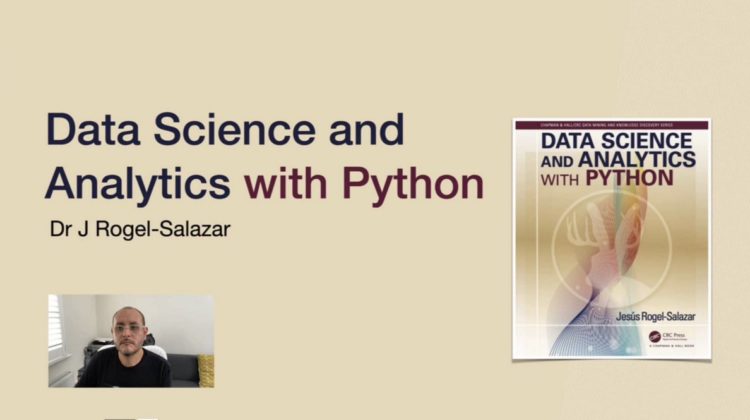
This is a video I made for my publisher about my book “Data Science and Analytics with Python”. You can get the book here and more about the book here.
The book provides an introduction to some of the most used algorithms in data science and analytics. This book is the result of very interesting discussions, debates and dialogues with a large number of people at various levels of seniority, working at startups as well as long-established businesses, and in a variety of industries, from science to media to finance.
“Data Science and Analytics with Python” is intended to be a companion to data analysts and budding data scientists that have some working experience with both programming and statistical modelling, but who have not necessarily delved into the wonders of data analytics and machine learning. The book uses Python as a tool to implement and exploit some of the most common algorithms used in data science and data analytics today.
Python is a popular and versatile scripting and object-oriented language, it is easy to use and has a large active community of developers and enthusiasts, not to mention the richness oall of this helped by the versatility of the iPython/Jupyter Notebook.
In the book I address the balance between the knowledge required by a data scientist sucha as mathematics and computer science, with the need for a good business background. To tackle the prevailing image of a unicorn data scientist, I am convinced that the use of a new symbol is needed. And a silly one at that! There is an allegory I usually propose to colleagues and those that talk about the data science Unicorn. It seems to me to be a more appropriate one than the existing image: It is still another mythical creature, less common perhaps than the unicorn, but more importantly with some faint fact about its actual existence: a Jackalope. You will have to read the book to find out more!
The main purpose of the book is to present the reader with some of the main concepts used in data science and analytics using tools developed in Python such as Scikit-learn, Pandas, Numpy and others. The book is intended to be a bridge to the data science and analytics world for programmers and developers, as well as graduates in scientific areas such as mathematics, physics, computational biology and engineering, to name a few.
The material covered includes machine learning and pattern recognition, various regression techniques, classification algorithms, decision tree and hierarchical clustering, and dimensionality reduction. Though this text is not recommended for those just getting started with computer programming,
There are a number of topics that were not covered in this book. If you are interested in more advanced topics take a look at my book called “Advanced Data Science and Analytics with Python”. There is a follow up video for that one! Keep en eye out for that!
